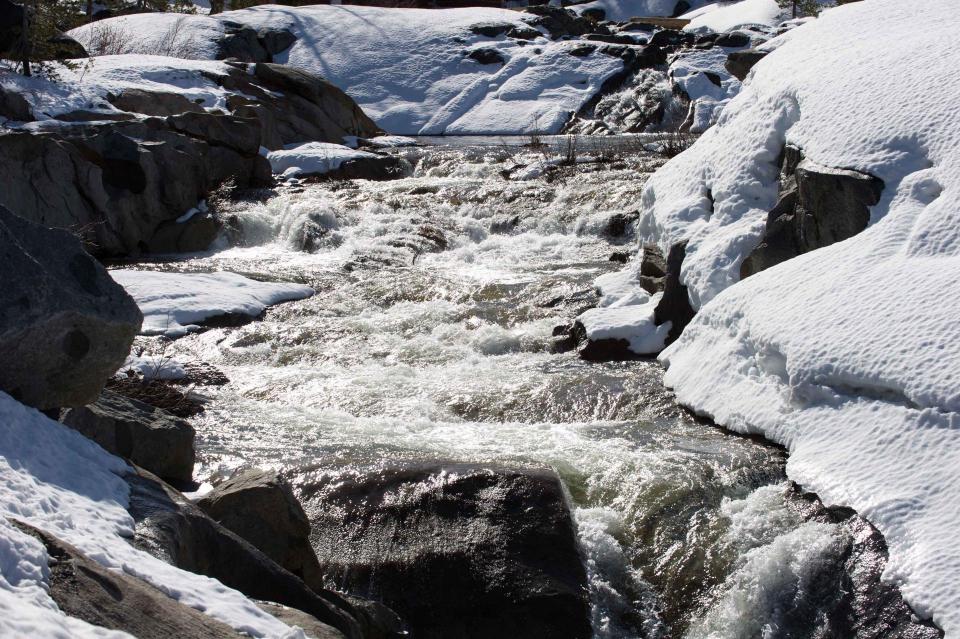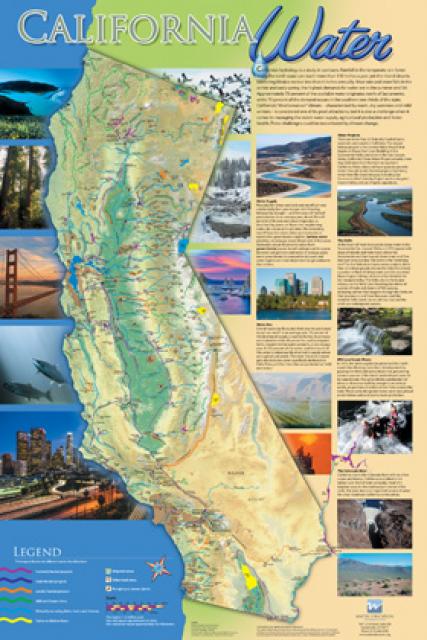Water Supply in California
 California’s “Mediterranean”
climate, characterized by
warm, dry summers and mild winters, is considered one of its
great attractions, but it also can be unpredictable with flooding followed by drought and few years of “normal”
precipitation. [See also Hydrologic Cycle].
California’s “Mediterranean”
climate, characterized by
warm, dry summers and mild winters, is considered one of its
great attractions, but it also can be unpredictable with flooding followed by drought and few years of “normal”
precipitation. [See also Hydrologic Cycle].
This also makes its water supply unpredictable. For instance, runoff and precipitation in California can be quite variable. The state has a vast network of surface water reservoirs, such as those in the State Water Project and the federal Central Valley Project. That network is designed to hold carryover storage from year to year to ensure water is available for urban, agricultural and environmental purposes during dry years.
Geography also affects precipitation patterns and rates. The Sierra Nevada mountain range catches clouds before they reach Nevada, and the snowpack provides significant runoff for downstream reservoirs on the Sierra Nevada’s west slope. The northwestern part of the state can receive more than 140 inches per year while the inland deserts bordering Mexico can receive less than 4 inches.
In addition to the state’s runoff, California annually receives about 1.5 million acre-feet in runoff from Oregon and 4.4 million acre-feet from the Colorado River. Finally, roughly one-third of the state’s water supply in a normal year comes from groundwater.
And at the heart of California – and of most discussions about water – is the Sacramento-San Joaquin Delta. Two-thirds of Californians get all or part of their drinking water from the Delta by virtue of local, state or federal water projects that export water to the San Francisco Bay Area and Central and Southern California.
By the numbers:
- California receives on average about 200 million acre-feet per year in precipitation (rain or snow)
- In a normal precipitation year, about half of the state’s available surface water – 35 million acre-feet – is collected in local, state and federal reservoirs
- California is home to more than 1,500 reservoirs
- About two-thirds of annual runoff evaporates, percolates into the ground or is absorbed by plants, leaving about 71 million acre-feet in average annual runoff










